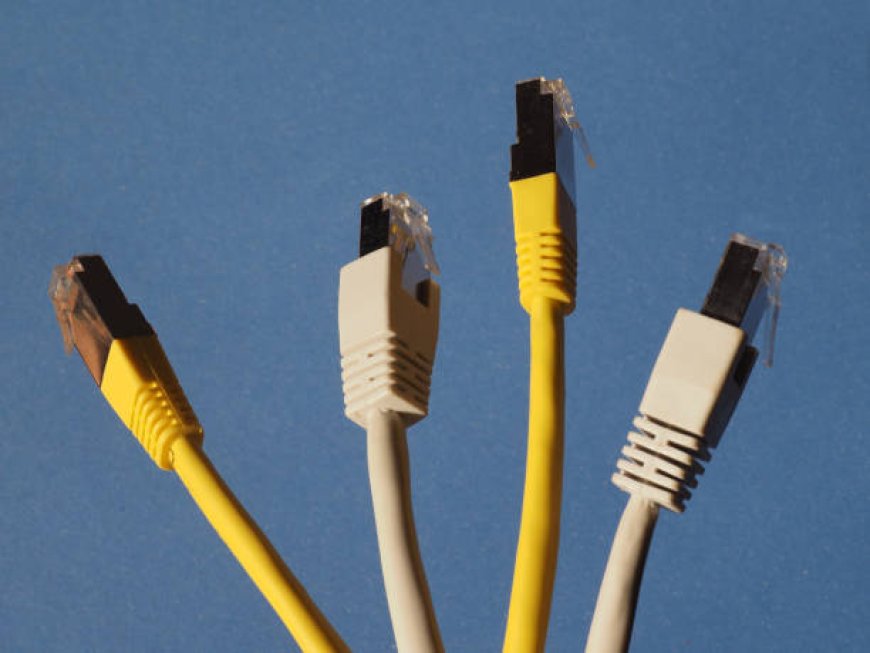Everything You Didn’t Know About Network Cable Jackets
hidden role of network cable jackets, their types, benefits, and why they matter when choosing the right Ethernet cable for your installation.

Introduction: Why Cable Jackets Deserve More Attention
When people shop for Ethernet or networking cables, they usually focus on performance specs like bandwidth, category type, or cost. But theres one component that often gets ignored the cable jacket. It may look like just an outer cover, but in reality, it plays a critical role in protecting the inner conductors and ensuring long-term performance.
Cable jackets determine how well a cable handles heat, fire, moisture, and mechanical stress. Whether you're setting up a home network or a commercial infrastructure, the wrong cable jacket can lead to failure, code violations, or even safety risks.
What Is a Network Cable Jacket?
A network cable jacket is the outer protective layer that surrounds the internal conductors and insulation. Its main job is to guard the cable against physical damage, fire hazards, moisture, and chemical exposure. The jacket type directly affects the cables safety rating, installation environment, and compliance with local building codes.
Different projects require different jacket types, depending on factors like building design, air circulation spaces, or outdoor usage.
Why Jacket Types Really Matter
The choice of a cable jacket should not be taken lightly. Each jacket material has its own fire resistance, smoke emission, and durability profile. A cable with the wrong jacket can degrade quickly, underperform, or even pose a fire risk.
This is why it's important to choose jackets based on both the technical needs and the location of installation. It can also affect certifications like UL ratings and code compliance, especially in commercial buildings.
Common Types of Network Cable Jackets
Plenum (CMP)
Plenum-rated jackets are designed for air circulation spaces like HVAC ducts and ceiling plenums. These cables are made from low-smoke, fire-retardant materials that slow down flame spread and emit fewer toxic fumes when exposed to heat. They are often required by law in commercial and multi-floor buildings.
Riser (CMR)
Riser-rated jackets are used for vertical cable runs between floors, such as inside walls or shafts. They are more affordable than plenum cables but still offer decent flame resistance. They are not suitable for plenum spaces but are ideal for riser shafts where airflow is minimal.
PVC (CM, CMG)
PVC jackets are commonly used for general applications where theres no fire code restriction. They are flexible and cost-effective but release more smoke and toxins during combustion. These are usually found in homes, desktops, and basic in-wall installations.
LSZH (Low Smoke Zero Halogen)
LSZH jackets emit very low smoke and no toxic halogen gas when burned. They are best for enclosed or high-traffic areas like hospitals, public transport, and data centers. These jackets offer excellent safety and environmental friendliness.
How to Choose the Right Jacket
Before choosing a cable, consider the following questions
-
Will the cable be installed in air ducts or open ceilings?
-
Is the building residential, commercial, or industrial?
-
Will it be exposed to heat, moisture, or chemicals?
-
Do local building codes require a specific rating?
If the installation is in a commercial building, a plenum-rated jacket might be mandatory. For vertical wall runs, a riser cable is often enough. For home use, a basic PVC cable may do the job unless otherwise specified.
Environmental Factors That Impact Cable Jackets
Temperature and Humidity
Cable jackets react differently to extreme temperatures. A cable in a hot attic or damp basement needs to resist cracking and moisture penetration. Some low-cost jackets degrade quickly in such environments, which can lead to exposed conductors or signal loss.
UV and Chemical Exposure
Cables used outdoors or in industrial settings must withstand UV rays, oils, and chemicals. Special outdoor-rated jackets are made for these tough conditions. Standard indoor jackets will not survive long when exposed to sunlight or harsh substances.
Mechanical Stress and Flexibility
If the cable will be frequently moved or bent during installation, flexibility becomes important. PVC is generally more flexible than plenum or riser jackets, but its not always the safest choice for every location.
Signs You May Be Using the Wrong Cable Jacket
-
Cable insulation becomes brittle or discolored
-
You notice visible cracks or damage on the outer jacket
-
Strong plastic or chemical odor when bent or stressed
-
Building inspectors or installers flag your cable for non-compliance
-
Unusual signal drops or short cable lifespan
Choosing a high-quality product from a trusted source like monk cable helps avoid these problems and ensures you're using jackets suited to your specific setup.
Do Jackets Affect Network Speed?
Technically, the jacket itself doesnt control how fast data travels. That job belongs to the internal copper conductors and shielding. However, a damaged or degraded jacket can allow moisture, heat, or EMI to interfere with those conductors, which may reduce performance or cause failure.
So while the cable jacket doesnt impact speed directly, it plays a big role in preserving signal quality and ensuring the cable works under real-world conditions.
Why Builders and Installers Care About Jacket Ratings
Professionals in construction, IT, and cabling dont just look at performance they look at code compliance and safety ratings. A cable that meets the wrong standard may get rejected during building inspections or delay your project.
Knowing whether a job calls for CMP, CMR, or LSZH jackets is key to avoiding costly mistakes. Thats why professional-grade cables from brands like monk cable offer clear labeling and certification details to make selection easier.
Conclusion: Dont Underestimate the Jacket
When choosing a network cable, dont just look at speed and category. The jacket is your cables first defense against fire, interference, and damage. It's the part that protects everything else inside. Without the right jacket, even the best internal wiring can fail in the wrong environment.
By understanding the purpose and types of cable jackets, you can make informed decisions that save money, meet legal standards, and keep your installation running smoothly. For quality, compliance, and durability, always choose a trusted provider like monk cable when shopping for networking products.





































